 |
|
| It is best to alternate between sitting and standing throughout the day | There is no single posture that is correct for a full workday. The body needs to move and change positions. |
Background
Either sitting for an entire work day or standing for the whole day can create fatigue, which in turn can lead to discomfort and loss of productivity. A traditional way to provide relief is to design the workstation to allow alternating between sitting and standing.
This approach is part of a larger issue of providing ability to change positions. There is no single posture that is correct for a full workday — people need to move and change positions.
Objectives
Design workstations and seating to allow change of posture.
Ideas and Options
Adjustable risers
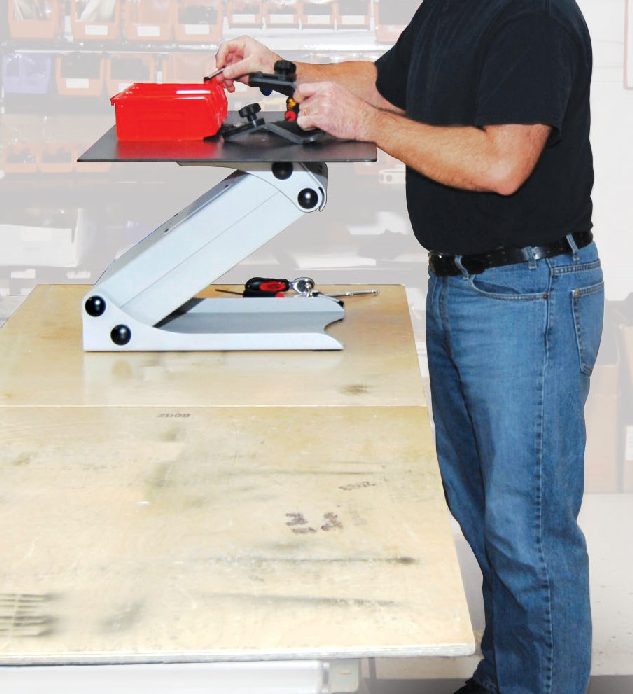 |
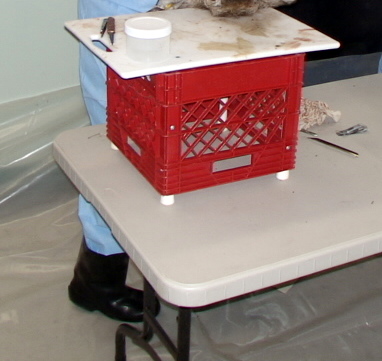 |
| “Taskmate”www.healthpostures.com | Milk crate to convert sitting to standing height |
Probably the least expensive way to provide ability to switch between sitting and standing is to use a riser. The best approach is to use devices designed for this purpose, since they tend to be easier to use, more stable, and more professional looking. Employees often spontaneously use a box or milk crate to raise their work to standing height, which is acceptable but can involve extra effort to switch back and forth and can sometimes be unstable and look inappropriate.
Standing height with tall stool
 |
| Fixed-height work surface at standing height |
Another approach that can be inexpensive, at least when setting up a new area, is to use standing-height workstations and then provide a tall stool. Thus the employees can both stand and sit throughout the day.
Adjustable height benches
 |
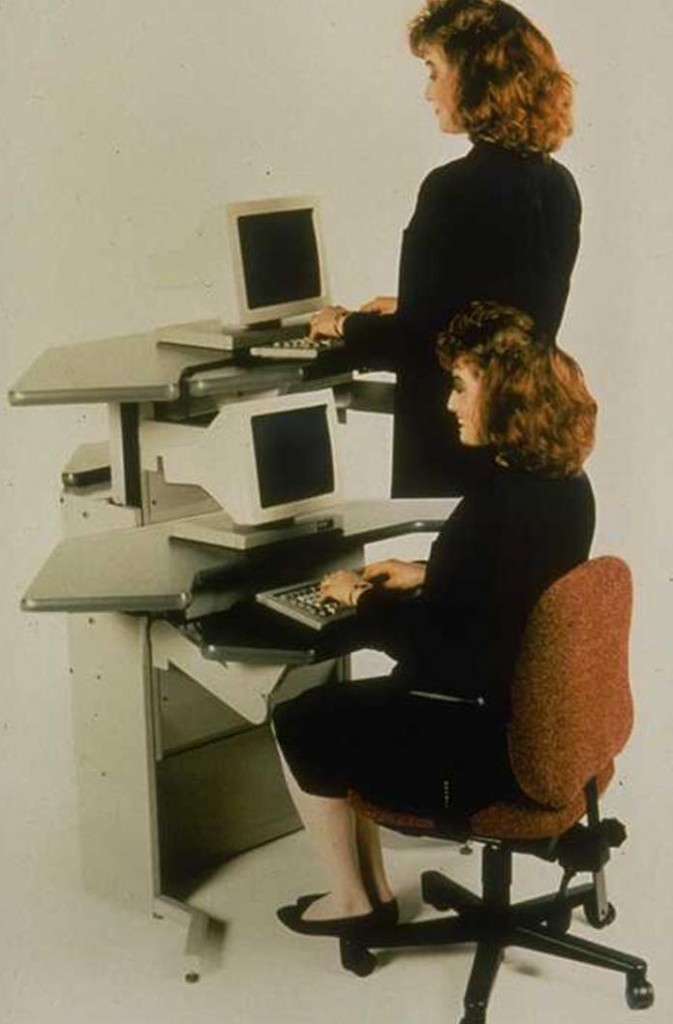 |
| This die cart workstationallows quick change between sitting and standing | Pneumatic spring lifts provide nearly instantaneous change (office or industry) |
The same features that are used to adjust workstations to accommodate individual height and task differences can also be used to alternate between sitting and standing. Adjustable-height sit-stand workstations are often marketed to office environments, but can be used in light assembly as well.
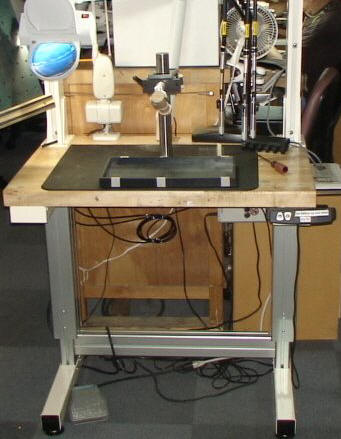 |
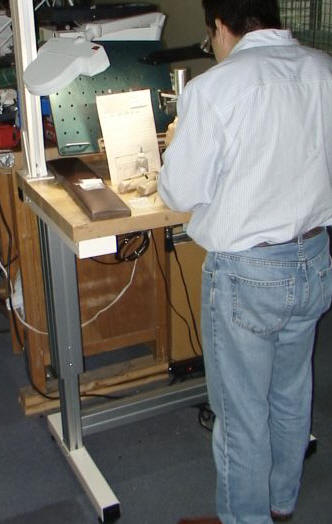 |
| Sitting height | Standing height |
Another example from light manufacturing. This bench is operated by electric motor (www.ergosource.com)
Examples from 18th and 19th century
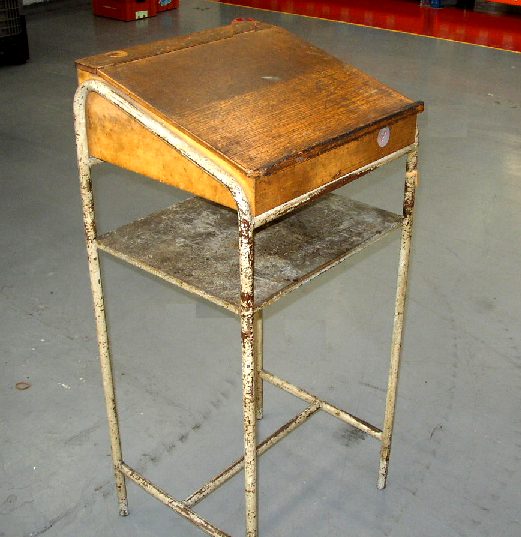 |
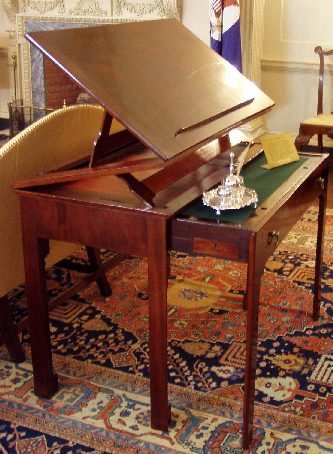 |
| High desk used with tall stool | Thomas Jefferson’s adjustable desk |
Alternating between sitting and standing is not particularly new. In the 19th century (and perhaps earlier), the most common type of desk was designed for standing height, with a tall stool provided to allow changing to a sitting position. Thomas Jefferson invented a desk that adjusted from sitting to standing heights.
Comment on anti-fatigue mats
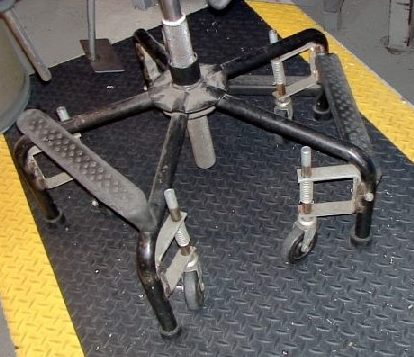 |
| Stool fitted with spring wheels to facilitate use on mats |
There is a potential conflict between (a) using an anti-fatigue mat when standing,, and (b) sliding a stool back and forth on the mat. The best way to resolve this conflict is to use decking that provides resilience for the legs and feet, but which is smooth to allow chairs and carts (see flooring).
